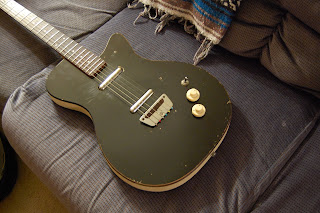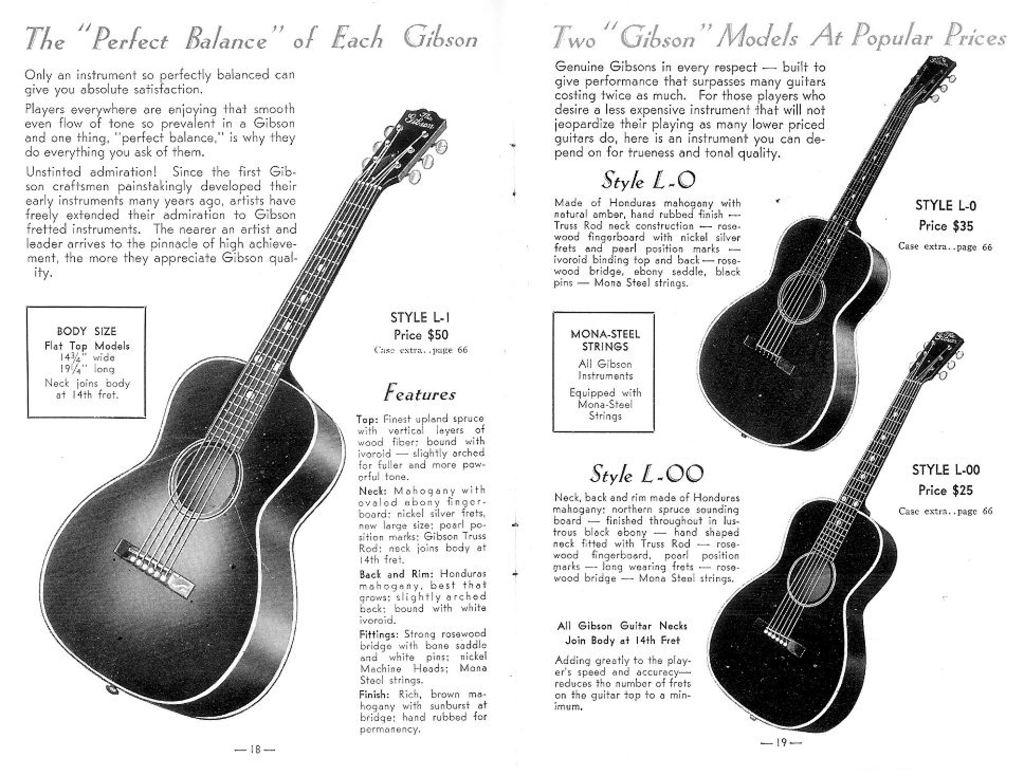Most of the guitars that I buy are finds- as in they have been in a closet or under the bed for 30 years. That means that they usually need a fair amount of repair like loose braces, neck sets, lifting bridges, etc. When they need these kind of structural repairs I can't play them before buying. I can't always hear how they will sound after being fixed up before I buy them. It can be a bit of a gamble. Here are a couple of those gambles.
This was probably the biggest gamble of all. This is a 1943 Gibson J-45. This has the fabled "banner" gracing the headstock that was only present during the war years. I bought it from the grandson of the original owner. The back braces, tone bars and finger braces were all loose. The owner could not be convinced of this fact for some reason. He had strings on it at full tension which caused the action to be very high. I bought it anyway because I wanted a banner.
This was a GREAT bet. I figured it would need a neck set but after the braces were glued tight the neck set was perfect. It has almost factory saddle height. The tone is warm, dry and very responsive. You can feel the pluck of each string deep in your chest. Suffice it to say they were right about the banners.
This 1955 Gibson J-50 was a recent gamble. It was listed as a '54 and was about an hour and a half from Birmingham. I could tell from the pictures that while the tuners were there the buttons were not. I just happened to have bought an old Kay with period Klusons for next to nothing the week before! When I got the guitar in my hands I could tell that the bridge had been shaved meaning that it probably needed a neck set. I bought it anyway.
This is a very special guitar and probably the best gamble of all. I took it straight to my local shop where my friend Keith works. We put the extra set of Klusons on and strung it up. As he was winding the strings I could hear that familiar hollow thump typical of the round shoulder Gibsons. At full tension we immediately knew that this was not just an average 50s Gibson. It was loud, nuanced, responsive and most of all LOUD. I'm talking bluegrass loud. We couldn't hear each other talking over the rumbling E chord. Then we took it into the acoustic room to compare it to some new guitars. We soon realized that this was guitar of myth and that it could never leave our circle of pickers.
This is a 60s Silvertone (Harmony Sovereign), I can't remember the Silvertone number designation. I bought it from a different local shop needing a neck set. When they got it in the called me because they knew I love the American made solid wood guitars. They just said it was a Silvertone. When I walked in I immediately recognized the distinctive bean shape and pinless bridge as a rebranded Sovereign. I was ecstatic. They thought I was crazy for buying a hard case for it.
The neck set was easy because the dovetail had already shifted in the joint. I strung it up and started strummed some cowboy chords and fell head first in love with Sovereigns. The J-45s sat in their cases for a few days while I became acquainted with it. It had the rumble of a J-45 but sounded more bluesy- no, boxy. This was probably a result of the ladder bracing. Sometimes I just want to strum my favorite chord progression and belt out the lyrics. This guitar was just about perfect for that. It had the magic and can be had for less than $500. Don't be fooled by the price, this is a professional instrument. I sold it to a big time session player in Nashville. It is a safe bet to say that you have heard him play.
It is a special feeling to strum an old guitar for the first time. It is even more exhilarating when you have a bunch of time and money invested in it! Maybe I have just gotten lucky but I have never had a bust- yet. If you find one of these for a good deal then don't be afraid. Take the plunge.
TVG
 RSS Feed
RSS Feed Twitter
Twitter























































